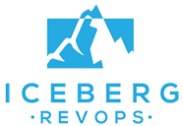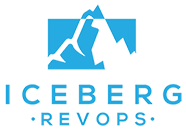In the beginning of 2017, the SmartRecruiters SDR (sales development representative) program launched its first organized outbound prospecting initiative. By the end of the year, the team was a machine. The team created over $2M in qualified outbound pipeline in Q4.
We did this by focusing on speed and volume. Our approach to prospecting was to go a mile wide and an inch deep. While this proved an excellent way to jump start the program, it was inefficient. The only way to scale an inefficient process is to “throw bodies at it”, meaning to hire more reps. Not a scalable approach.
Because we sell into enterprise companies, our high-volume approach had two major weaknesses:
-
SDRs spent a significant portion of their time cleaning data and researching contacts. Every hour spent doing manual data work was an hour not spent selling.
-
Because our process was inefficient, prospecting into a large number of companies meant that we couldn’t spend much time nurturing any one company or person. Therefore, most opportunities were the result of good timing rather than excellent skills or strategy.
For us to truly scale, things had to change. Enter: Project Assembly Line. The purpose of the assembly line was to limit non-selling tasks for SDRs — outsourcing them to faster and less costly teams — and scaling up their selling activities with Outreach. This allows SDRs to focus on activities, like talking to prospects and nurturing accounts, that make money for the company.
The ultimate goal of the Assembly Line project is to narrow an SDR’s job to three high-value activities:
-
Choosing target accounts
-
Talking to prospects
-
Nurturing high-value accounts
When I tell other sales leaders about this vision, a common response is, “it all sounds great, but how do I do it?”
Building your own assembly line and supercharging your SDR program requires three main steps. The first step is to choose and train researchers to handle the manual tasks you want to outsource. The second is to prepare your CRM so that it automates and scales the process of assigning research. Finally, we scaled up our SDR team’s selling power with Outreach to tie the program together.
Through these three steps, we’ve tripled the contacts we activate every day, but first, I’ll share how we got there.
Step 1 – Find Researchers
The first thing you need to do is outsource the work that doesn’t absolutely have to be done by your SDRS – aka anything that doesn’t require interacting with prospects. The biggest detriment to their time that I needed to outsource is research.
Offloading research from your SDRs starts with deciding who will take on that work. I split the tasks into two categories: basic and advanced research.
Advanced research is the work that requires business acumen, native-level English, and any other skills that cannot be taught quickly, like collecting business insights about the account. Basic research is everything else. These include finding email addresses, confirming basic account data like company location, etc.
Pro Tip: Before you hire anyone, spend an hour doing the work. Think through the research process. Carefully consider the steps involved in doing the research and the tools used to do it.
Once you’re ready to hire, there are a few options at your disposal. Here are the ones I’ve used:
-
Your Company – Are there people who want to break into sales, but the timing isn’t quite right? A place on the assembly line team could be a great pipeline into the SDR function for people in roles like support or internships.
-
Local Universities – The SmartRecruiters SDR team went to Gonzaga University to find our first few researchers. This is also a great talent pipeline — one of our original research interns now works in operations full time, managing all assembly line research.
-
Upwork – Upwork (formerly Odesk) is my favorite online marketplace to find freelance researchers.
-
Overseas Managed Outsourcing – As our assembly line project grows, we’re finding it difficult to scale basic research while maintaining quality and speed. We recently chose a firm in India that will manage over half of our basic research.
Step 2 – Prepare Your CRM
You’ve hired an intern and a couple of contractors on Upwork. You created documentation, and they’re ready to go. The next step is to make sure that tasks are assigned to researchers using a process that is easy to track and manage.
At SmartRecruiters, we had a name for this step in our Assembly Line: “Account Enrichment”. An SDR chooses an account, waits a few days, and receives an alert letting her know that the account has all of the information she needs to start prospecting. When an account is “enriched”, it means that all of the account data (location, current ATS, etc.) has been checked, it has been appended with new contacts, and there are fresh business insights.
Updating and adding information to your CRM at scale can become messy if you’re not careful. The key to making your assembly line process run smoothly is leveraging the power of your CRM. We leverage our CRM to track each account through every step of the Assembly Line and prioritize accounts throughout. We’ve created a streamlined process where our SDRs simply click a button to request enrichment, and our researchers are guided through a standardized process for those accounts.
Step 3 – Scale up with a Sales Automation Tool
Adding quality prospect data to the CRM at scale without using valuable SDR time is great. But it’s all wasted if you don’t use the time and resources you’re saving wisely. This is where sales automation comes in. We used Outreach.io here to accomplish three things:
1. Multiply the Power of Each SDR
This is the most obvious benefit of using outbound automation. We’re able to keep SDRs on rails by automating tons of manual tasks and building sequences that help the teams call and email prospects at predetermined intervals. Before adding Outreach into our Assembly Line, sending 100 personalized emails and making 100 calls in a day was a pipe dream. Now it’s table stakes.
Using Outreach has enabled us to double the accounts and tripled the contacts we “activate” on a daily basis, and we’re still saving time compared to our old process.We used a lot of the extra time saved for more hands-on engagements like social selling and nurturing opportunities. That’s where the real gold is.
2. Understand The Data
Sending lots of emails and making lots of calls means that you have a ton of valuable data at your disposal—if you use it.
With Outreach’s A/B testing features, we can test every element of an email. Native reporting lets us know which sequences lead to the most replies and interaction with prospects. We take it a step further by using Outreach’s powerful Salesforce integration to pull all of our prospecting data into Salesforce and track the results of prospecting campaigns through the entire funnel.
Lots of teams talk about their “response rate” on emails and campaigns. We want to know more. The questions we answer by combining Outreach and Salesforce data include:
-
Which activity type leads to the most meetings and pipeline?
-
How many activities, on average, does it take to set a meeting?
-
How many outbound meetings set with Outreach does it take to create $1M in pipeline?
-
How many days, on average, does it take to set a meeting with a cold account?
Here’s a view of how we’re reporting on our success metrics:

3. Get Creative to Stand Out
Scaling outbound prospecting efforts can lead to some growing pains. Outreach’s power and flexibility allow us to address those growing pains in creative ways. Here’s my favorite example:
Have you ever received a great cold email from a sales rep, forwarded it to the appropriate person in your company, and then learn that she received the exact same email from five other people? We certainly have, so we got creative with Outreach triggers to solve for this.
We create three versions of every outbound sequence, each with a slightly different first email. We also set the delay between when the prospect is sequenced and when the first email is sent differently. Using a Salesforce formula field and an Outreach trigger, we randomly assign each prospect to one of the three sequences. This, combined with fun and creative personalization, means that the chance of a decision-maker being forwarded the same email from two people on the same day is significantly reduced.
Setting your Assembly Line up for Success
I’ll wrap up with a few tips to help you avoid some mistakes that we made early on:
Create Custom Roles and Profiles: Creating custom roles and profiles for your research team is important to keep your team focused only on the fields they need to see and to restrict your external contractors’ access to only the objects they need to update.
Make it Your Own: The process as outlined above might not fit your sales process exactly. That’s ok. This is a simple blueprint that can and should be tweaked to work for your org. At SmartRecruiters, the process is constantly evolving. Just be sure to document your customized process so new stakeholders can jump in easily!
Get Some Help: If you have some sales operations experience, this probably feels like a quick project. If you’re new to Salesforce, it may leave you feeling the same way as a Discovery Channel special on String Theory. Don’t freak out—it’s really not as complex as it sounds. Grab a buddy with operations experience (or contact us) and get to work. I’ve helped a few company set this up already and am always happy to hop on a call!


